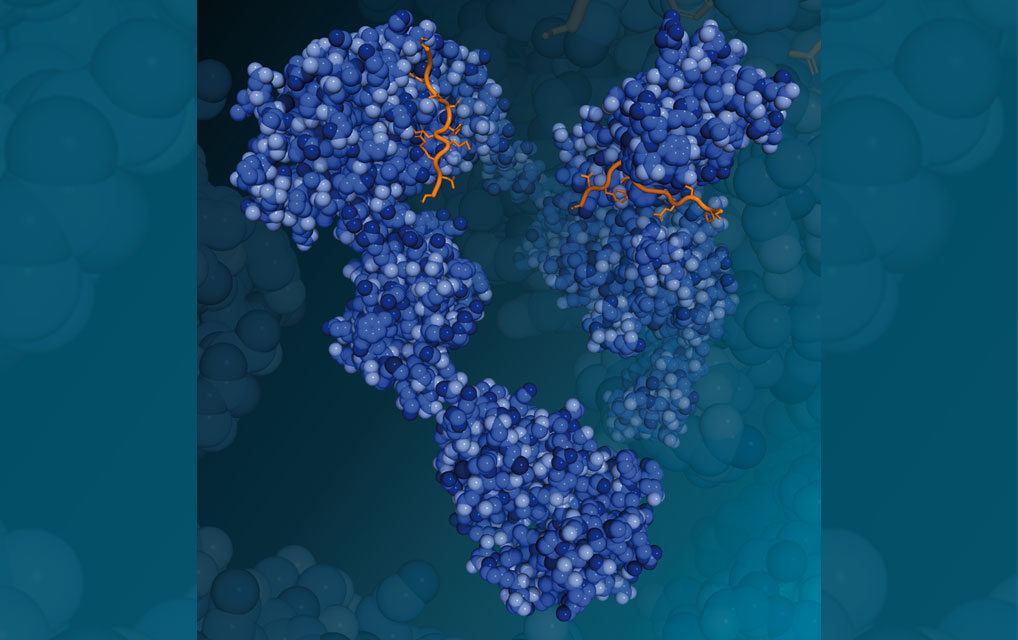NSF announces major investment in spectroscopy to advance critical imaging technologies

Proteins play important roles in cellular signaling. The image shows a structural model of a protein enzyme bound to its target molecule as part of the process to modulate the signaling. NMR spectroscopy was used to identify the bipartite binding interface between the enzyme and its substrate. The ultra-high field NMRs planned for the NAN will provide even better resolution, speed, and sensitivity for similar analyses leading to new understandings in structural biology.
Credit: Irina Bezsonova, Department of Molecular Biology and Biophysics, UCONN Health
The U.S. National Science Foundation is advancing biomolecular research through the establishment of a geographically distributed Network for Advanced Nuclear Magnetic Resonance. This investment of $40 million is made through NSF's Mid-Scale Research Infrastructure II program, an NSF-wide effort to meet the research community's needs for modern research infrastructure to support science and engineering research.
The network will allow researchers to have access to ultra-high field nuclear magnetic resonance spectrometers to study the structure, dynamics and interactions of biological systems and small molecules. Understanding how these facets interact and how life has evolved and adapted, including under extreme conditions and environments, will advance the scientific community's understanding of biology and may result in the development of new materials, battery components, pharmaceutical ingredients, nanomaterials, surface coatings and catalysts. These new materials can further advance fields such as biology, medicine, engineering, electronics and manufacturing.
"This new infrastructure, along with the network of scientists to support it, will help advance research in biological sciences across the country through innovative experimentation and new biological insights," said NSF Assistant Director for Biological Sciences Joanne Tornow. "This project can help us understand more about the world around us and how life has adapted to that world, allowing us to harness those adaptations to biotechnologies and to enable a future vibrant U.S. bioeconomy."
The project creates a centralized network led by the University of Connecticut School of Medicine in partnership with the University of Georgia and University of Wisconsin. Through this network, a broad geographic range of researchers across disciplines will have access to nuclear magnetic resonance spectroscopy. Researchers who currently do not use this technology but whose work could benefit from it will be given the opportunity to engage with this cutting-edge field and expand their research. Remote users at any institution will be able to bring or send their samples to take advantage of the program. Expanding the availability of ultra-high field nuclear magnetic resonance resources in the U.S. will allow scientists to conduct innovative science and studies in partnership and on par with researchers in other countries.
The network will also broaden participation in STEM by providing technological resources, training and access to collaborators to students from backgrounds underrepresented in STEM and those at Primarily Undergraduate Institutions and Historically Black Colleges and Universities. The network will also engage in community outreach and create a set of online tutorials, protocols, and additional technical materials.
For decades, NSF has funded cutting-edge infrastructure that allows scientists to push the frontiers of science and engineering. Through the Mid-Scale Research Infrastructure program, NSF supports experimental research capabilities that have strong scientific merit, respond to an identified need of the research community, demonstrate technical and managerial readiness for implementation, include a well-developed plan for student training in the design and implementation of mid-scale research infrastructure, and involve a diverse workforce in mid-scale facility development.
More information about the Mid-Scale Research Infrastructure-2 program and the Network for Advanced Nuclear Magnetic Resonance project can be found at nsf.gov.
Media Contacts
Media Affairs, NSF, (703) 292-7090, media@nsf.gov


